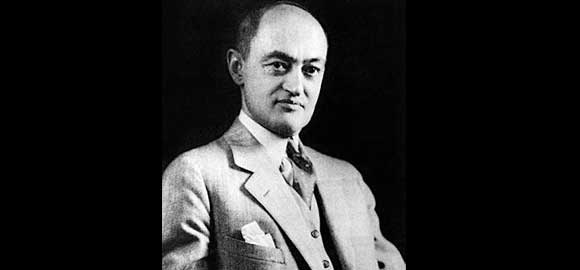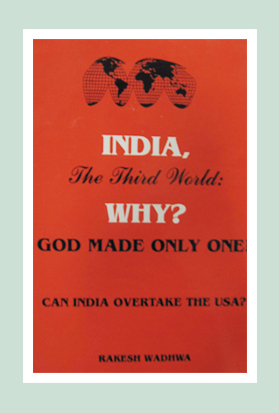On Joseph Schumpeter’s Idea of Creative Destruction
Creative destruction refers to the continuous product and process innovation mechanism by which new units of production replace outdated ones. Joseph Schumpeter, an Austrian economist (1883 – 1950), introduced this concept to economic theory in 1942. According to him, in the evolutionary process of capitalism, the entrepreneur is a key agent. The radical innovations he introduces (creation) replaces the old way of production (destruction). Radical innovation then leads to net economic growth, despite the destruction of the obsolete production method and the consequent loss of output, as the innovation adds more production capacity than the older method.
In fact, Schumpeter argued that it was the entrepreneur’s introduction of radical innovation that fostered long-term economic growth. Hence, the process of creative destruction may also be described as the process of creating net economic growth in the capitalist system, where entrepreneurs create more economic value from their innovations than is destroyed by what their innovation replaces.

Schumpeter’s “Theory of Economic Development”
Schumpeter wrote on the evolution of capitalism, and the role of creative destruction, in his book, Theory of Economic Development, published in 1911. Schumpeter departed from the equilibrium analysis of Leon Walras, with its assumptions of passive, price-taking economic agents and implication of equilibrium or a stationary economic state. He found this to be inadequate to describe the continuous disruption so characteristic of the real world. Schumpeter needed a theory to explain the dynamism of capitalist economies, and he found his answer in entrepreneurial innovation.
Entrepreneurs had been missing from economic analysis. David Ricardo’s productive function involved the three factors of production, labour, capital and land. Robert Solow’s growth theory explained that more labour, more capital and more land could explain growth. He saw that innovation mattered too, but couldn’t fit it into Ricardo’s framework. Schumpeter brought the entrepreneur front and center. In his book, Capitalism, Socialism and Democracy (1942), Schumpeter said:
“[I]n capitalist reality as distinguished from its textbook picture, it is not . . .competition which counts but the competition from the new commodity, the new technology, the new source of supply, the new type of organization (the largest-scale unit of control for instance)–competition which commands a decisive cost or qualityadvantage and which strikes not at the margins of the profits and the outputs of the existing firms but at their foundations and their very lives.”
Schumpeter characterized innovation as “industrial mutation,” which “incessantly revolutionizes the economic structure from within, incessantly destroying the old one, incessantly creating a new one. This process of Creative Destruction is the essential fact about capitalism. It is what capitalism consists in and what every capitalist concern has got to live in…” Capitalism “not only never is but never can be stationary…” Change is the only constant in the evolution of capitalist economies. Schumpeter maintained that capitalist economies evolve discontinuously, not smoothly. Disruptive entrepreneurial innovations occur at “irregularly irregular” intervals.
Creative Destruction at Work
One country that personifies capitalism and creative destruction is the US. According to a study by the Ewing Marion Kauffman Foundation, a think-tank that studies entrepreneurship, America’s high rate of economic “churning” boosts productivity and material well being. Between 1977 and 2005, some 15% of all American jobs were destroyed each year as firms closed or cut back. However, many more jobs were created than destroyed with the expansion of successful firms and the entry of new ones. Start-ups, defined as firms less than five years old, provided a third of the new jobs during this period. Start-ups that didn’t succeed were 32% less productive on average than mature incumbents. Start-ups that continued to operate were 3% more productive than mature incumbents. After five years, they were 5% more productive.
We can see creative destruction around us everywhere. Records gave way to audio cassettes, which gave way to CDs, which are giving way to iPods, mobile phones and tablets. Mainframes gave way to desktops with a screen and CPU, and now we have laptops, netbooks, and one-piece desktops. Books are slowly giving way to e-books, and Barnes and Noble to Amazon. Creative destruction is the force behind innovation and progress.
 Rakesh Wadhwa. Ever since, I was a school boy, I knew India was on the wrong path. Socialism was just not what we needed to get ahead. Government controlled our travel; government controlled our ability to buy and sell; and government controlled our freedom to move our money. My life has focused on the inherent rights people have. When I was in college, I never understood, what the governments meant by their "socialistic attitude". If people are free to buy, sell and move their capital themselves without any restrictions by state, then the welfare of people is inevitable & hence the countries they live in will become wealthy. The government has no right whatsoever, to point a finger at me or my business. I am not a revolutionary. I just want to light up my cigarette and not get nagged about it. I believe in non-interfering attitude to attain more.
Rakesh Wadhwa. Ever since, I was a school boy, I knew India was on the wrong path. Socialism was just not what we needed to get ahead. Government controlled our travel; government controlled our ability to buy and sell; and government controlled our freedom to move our money. My life has focused on the inherent rights people have. When I was in college, I never understood, what the governments meant by their "socialistic attitude". If people are free to buy, sell and move their capital themselves without any restrictions by state, then the welfare of people is inevitable & hence the countries they live in will become wealthy. The government has no right whatsoever, to point a finger at me or my business. I am not a revolutionary. I just want to light up my cigarette and not get nagged about it. I believe in non-interfering attitude to attain more. 
 The Bastiat Award is a journalism award, given annually by the International Policy Network, London. Bastiat Prize entries are judged on intellectual content, the persuasiveness of the language used and the type of publication in which they appear. Rakesh Wadhwa won the 3rd prize (a cash award of $1,000 and a candlestick), in 2006.
The Bastiat Award is a journalism award, given annually by the International Policy Network, London. Bastiat Prize entries are judged on intellectual content, the persuasiveness of the language used and the type of publication in which they appear. Rakesh Wadhwa won the 3rd prize (a cash award of $1,000 and a candlestick), in 2006.
What the readers are saying…